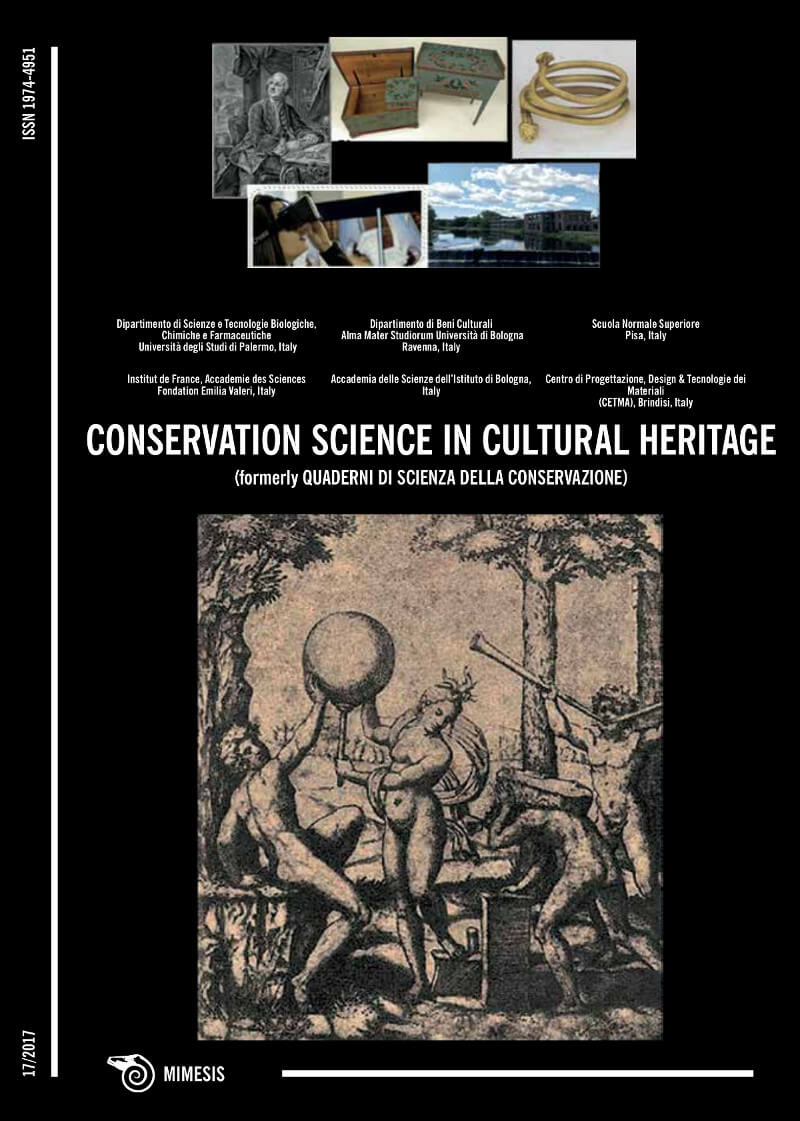Design Between Art, Technologies and Science
DOI:
https://doi.org/10.6092/issn.1973-9494/7958Keywords:
creativity, beauty, technology, virtual/augmented realityAbstract
Design, understood as the planning and realizing of a project for a complex, material or conceptual object, has acquired diversified meanings over the years. Among them, designer objects, expressed by the civilization that created them, bear witness to the close relationship existing between goods and works of art. Consequently, design, as an expression of creativity, is a point of convergence for beauty of form, technology and functionality and thus, for art and science.References
Russo, D. (2013) Theories and methods for design history. A critical review, AIS/Design Storia e Ricerche, N.1 March 2013 (available at: http://www.aisdesign.org/aisd/ - accessed 09/09/2017).
Griffith Winton, A., The Bauhaus 1919-1933 in Heilbrunn Timeline of Art History. New York: The Metropolitan Museum of Art available at: https://www.metmuseum.org/toah/hd/bauh/hd_bauh (August 2007; last revised October 2016) (accessed 15/11/2017).
Bertram. A. (1938), Design, Penguin Books Ltd., Harmondsworth, UK
https://permaculturenews.org/ (accessed 01/09/2017).
Mollison, B., Slay, R. M., Bourgignon, C., & Bourguignon, L. (1991). Introduction to permaculture. Tyalgum,, Australia: Tagari Publications.
Law No.4 of January 14, 1993, Gazetta Ufficiale No.11 (available in Italian at: http://www.gazzettaufficiale.it/eli/id/1994/05/06/094A2928/sg - accessed 15/10/2017).
Legislative Decree No. 42 of January 22, 2004, Code of Cultural Heritage and Landscape, as Mandated by Article 10 of Law No.137 of July 6, 2002 (L.D. No. 42), Gazetta Ufficiale No. 45 (Feb. 24, 2004), NORMATTIVA (available in Italian at: http://www.normattiva.it/uri-res/N2Ls?urn:nir:stato:decreto.legislativo:2004-01-22;42) (accessed 30/08/2017).
Statista, 2017, Made-In-Country-Index (MICI), A Global Comparison of Country Brands (available at: https://www.statista.com/page/Made-In-Country-Index - accessed 09/10/2017).
KPMG, 2011, Going Global, Internazionalizzazione ed evoluzione dei modelli di business (available at: https://home.kpmg.com/content/dam/kpmg/pdf/2016/06/it-Going-Global.pdf - accessed 10/10/2017).
Daverio, P. and Trapani, V. (Eds.), 2013. Cultural heritage design. Crisis, territory, identity, Arte series Rizzoli, Milan (available at: https://iris.unipa.it/retrieve/handle/10447/92107/113113/Il%20design%20dei%20beni%20culturali_Design%20per%20i%20beni%20e%20le%20produzioni%20culturali%20nella%20crisi_VTrapani.pdf – accessed 28/07/2017).
Chianese, A. and Piccialli, F. (2014) Designing a smart museum: When cultural heritage joins IoT. Next Generation Mobile Apps, Services and Technologies (NGMAST), Eighth International Conference on. IEEE, 2014
Lupo, E. (2011) Design e beni culturali: creare sistemi di valore per connettere cultura, luoghi, conoscenza, comunità, impresa, ISSUU (available at: https://issuu.com/elelupo/docs/design_e_beni_culturali_elupo - accessed 07/11/2017).
Downloads
Published
How to Cite
Issue
Section
License
Copyright (c) 2017 Salvatore Lorusso, Lucio Colizzi
Copyrights and publishing rights of all the texts on this journal belong to the respective authors without restrictions. Authors grant the journal right of first publication.
This journal is licensed under a Creative Commons Attribution 4.0 International License (full legal code).
See also our Open Access Policy.






